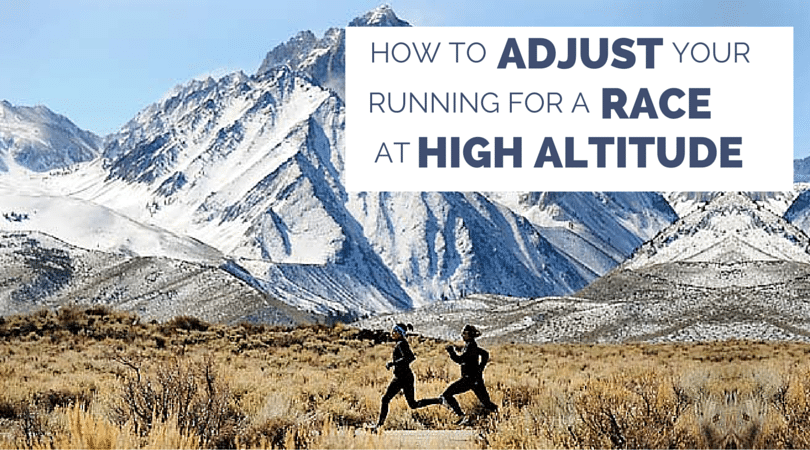A lot of runners take vacations, run races at altitude, or visit family and friends at cities and towns located at substantial elevations above sea level.
If you are planning out your next trip to altitude, and wondering about how it is going to affect your running, you are in the right place.
How hard is it to run at altitude when you have been training at sea level and how you can train for high altitude while running in low altitude?
Is it even possible?
We think so!
The best way to increase red blood cells without training in altitude or taking EPO is by following the recommendations of Patrick McKeown, who explains how you can increase your body’s production of red blood cells in a safe and inexpensive (actually, totally free) way!
Sounds like a gimmick, right?
Take a listen and you be the judge.
We believe it.
Now:
You’ve probably heard of pro runners heading to high-altitude training camps for several weeks, sleeping in high altitude training tent at night, or even installing a whole-house altitude simulation system to get an extra boost in fitness.
Elite runners go up to altitude to get ready to run fast, but if you’ve ever been to high altitude, you’ll know that running there is slow going, at least at first.
The beneficial effects of altitude training take weeks or even months to show up, so they aren’t really relevant to most runners.
After all, who’s got the time to take a 12-week sojourn to Flagstaff?
On the other hand, the negative effects of altitude are relevant to a lot more people.
At what point does altitude start to take its toll on running performance, and how big of a drop in performance should you expect for a given elevation?
Let’s find out.

How Does Running at High Altitude Affect Running Performance?
The announcement of Mexico City, elevation 7,300 feet, as the host of the 1968 Olympic Games kick-started a swell of research into the short-term and long-term effects of altitude on exercise and human performance, which continues to this day.
So fortunately, the scientific literature is fairly well-equipped to answer our questions.
How hard is it to run at altitude in distance races?
According to a 2008 review article by Bärtsch and Saltin, the effects of altitude on endurance performance can be observed at elevations as low as 2,000 feet above sea level.
The first impediment to endurance performance at modest altitudes like this is a drop in the oxygen content of your blood.
Because of the reduced air pressure at higher altitudes, oxygen diffuses into your red blood cells more slowly.
Here’s the deal:
This means that your blood passes through your lungs without being completely recharged with oxygen from the air.
This drop in blood oxygenation corresponds with a drop in VO2 max, a direct measurement of the oxygen absorbed by your body during exercise.
It’s important to note that a drop in VO2 max doesn’t always correspond to an equal drop in actual running performance.
As noted by running coach and physiology researcher Jack Daniels, the decrease in air resistance in the thinner air at higher elevations slightly counteracts the endurance-hampering lack of oxygen.
This is most relevant when running fast.
Indeed, sprint times in the 100m or the 200m are significantly faster at altitude, and are disallowed for record-keeping purposes.
What does that mean for long distance runners?
Endurance races and training runs are run at much slower speeds, which means the oxygen-deprivation of high altitude dominates, slowing you down.
What’s the bottom line?
Daniels also reports that, in his coaching and research experience, most runners do not notice the effects of altitude until about 3,000 feet above sea level.
What is the elevation effect on running performance?
Altitude also has a predictable effect on performance as the elevation increases.
A 2005 study by Jon Peter Wehrlin and Jostein Hallén examined the effects of six different simulated altitudes ranging from 1,000 to 9,200 feet above sea level on running performance.
The researchers had eight endurance athletes undergo VO2 max testing in an altitude chamber in their laboratory on several different occasions and plotted the drop in oxygen absorption during each treadmill test.
Wehrlin and Hallén found that increases in altitude had a predictable, linear effect on oxygen consumption and exercise performance.
Now:
For every thousand feet of elevation increase above 1,000 feet above sea level, VO2 max max dropped by 1.9%.
Additionally, time to exhaustion on a constant-speed treadmill run decreased by 4.4% per 1,000 feet of altitude.
These values were quite close to the results gleaned from similar previous studies, though the authors noted that there is some variability (to the tune of about 1% change in VO2 max per 1,000 feet elevation gain) in individual tolerance to high altitude.
This means that two equally-fit runners could have wildly different results if they both ran the Bolder Boulder 10k, a storied road race in Boulder, Colorado, elevation 5,300 feet.
What’s the bottom line?
If you live at sea level, and you are taking a trip to a high or moderate altitude city, the thin air will undoubtedly affect your running while you’re there.
What does that mean?
If we approximate a drop in VO2 max as a direct drop in running ability (which is not strictly true, but will work as an estimate), an eight-minute mile becomes an 8:45 mile at 5,000 feet above sea level.
What Does This Mean For Running a Race at High Altitude?
If you’re at altitude for several days, the effects will be lessened as your body adapts, but you still need to acknowledge that you won’t be able to claw your way back towards your sea level paces until you’ve had time to adapt.
You should also be aware that you’ll be slowed even at more moderate altitudes of 3,000-4,000 feet above sea level.
Unfortunately:
As an endurance athlete, the performance-hampering effects of moderate altitude are more sharply-felt when compared to sedentary people.
Are there any tips for running at altitude?
If you are traveling to very high altitudes (above 8,000 feet), Bärtsch and Saltin caution that you should take a few days to rest before you ease into running again; they also note that altitude sickness becomes a risk at this elevation as well.
Need help planning how to best race or utilize a training trip to altitude?









8 Responses
What is the impact for a person who lives and trains year round at high altitude (7500′) and races at near sea level. What kind of gain can you get from that?
Same question as Michelle. I live and train at 6900′. Would it be beneficial for me to target a marathon at sea level? If so, when is the right time to arrive before the race so I don’t lose any of the altitude benefits? Thanks!
I live at at 7,200 feet elevation and, while not a researcher, I’ve read a bunch of articles on altitude and training. Its always easier to run lower than your home elevation, so do plan to run your PR marathon at sea level. Be aware that the benefits of living at higher altitude than your race altitude can begin to decrease within three days of arriving at the lower altitude. So run the Kona or Anchorage marathon, but for maximum benefit just be sure to arrive at the lower altitude only a day or two before the run.
Thanks for sharing Patrick! Other readers will enjoy your findings.
Try to get more knlodge about the trannings
Hi Shashi, if you are looking for general training information as a beginner, check out this https://runnersconnect.net/coach-corner/dont-shun-runwalk-method-experienced-beginners-alike-can-ultilize-runwalk-smarter-training/. Hopefully this helps! Let us know what you are looking for.
hi guys,please help out ,what are the effects of high altitude training for marathon athletes
Hi Theodore, everything you need is in this post 🙂